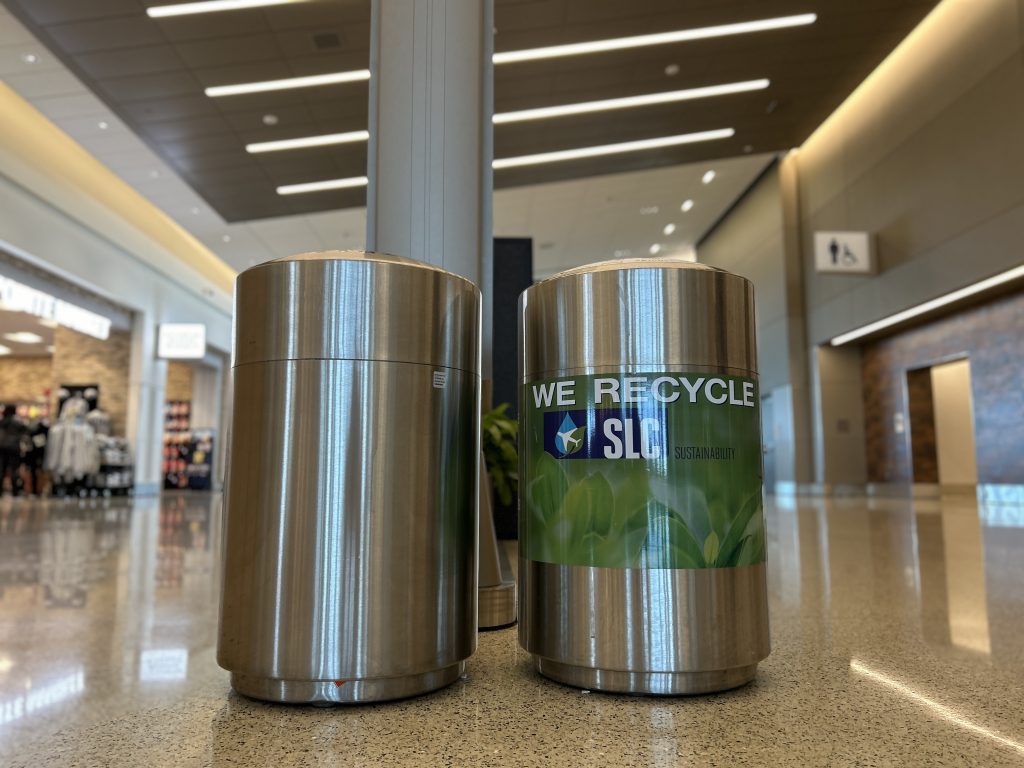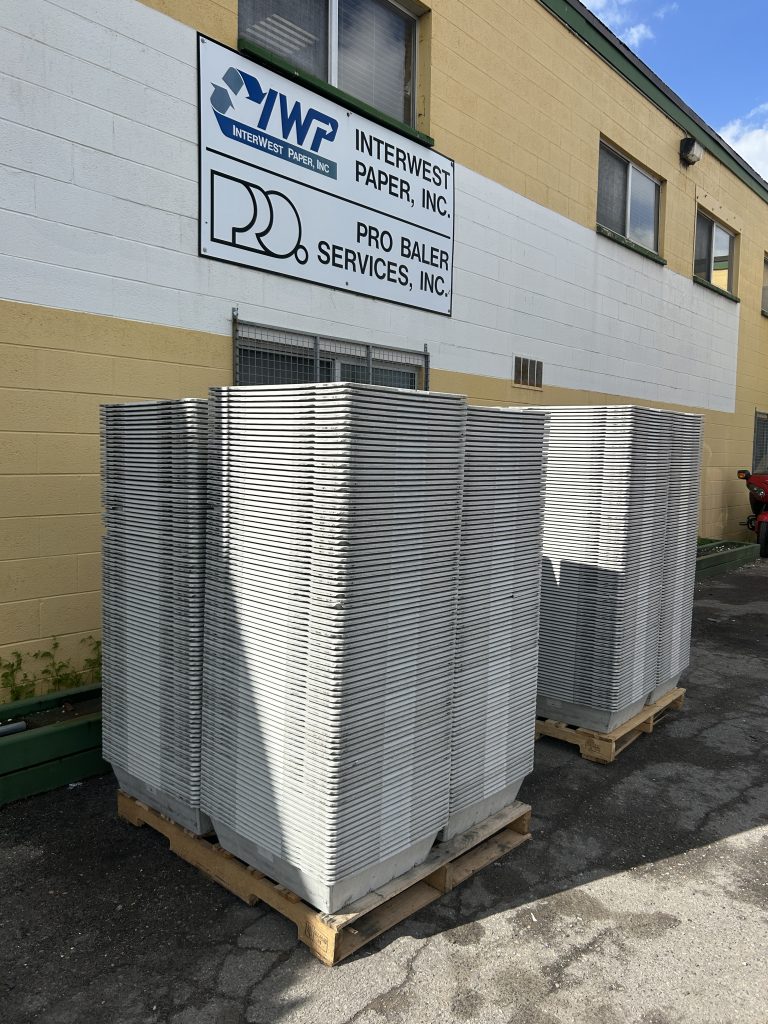Giving Waste a Second Life | Recycling at SLC

Cigarette butts. Old tires. Used cooking oil. TSA trays. What do these items have in common? They are all recycled by the Salt Lake City International Airport (SLC). Starting in 2000, the Airport began recycling office paper, plastic, cardboard and aluminum. Quickly, airfield maintenance joined in, collecting excavated soil, concrete and asphalt for reuse. They also began recycling scrap metal, batteries, pallets, vehicle tires, paint, used diesel, used motor oil and air conditioning refrigerant.
By 2002, SLC’s recycling efforts extended to the terminal and concourses with 40 public recycling bins placed next to trash receptacles. Today, the airport has 285 recycling stations throughout the terminal and concourses.
“Recycling is important because just about anything can have a second life,” said Juan Martinez, environmental and sustainability coordinator at SLC. “We’ve come a long way in terms of technology where we can repurpose almost anything,” Juan continued. “It’s just a matter of finding the right facility that can do it.”
A Second Life for TSA Trays

With upwards of 30,000 passengers passing through the security checkpoint on busy days, TSA trays at SLC go through a lot of wear and tear. Naturally, trays that reach the end of their functionality need to be replaced. This past spring, almost 700 TSA trays reached the end of their usability at the airport. Rather than send them to a landfill, TSA reached out to SLC’s environmental and sustainability team about recycling the trays.
The team quickly rose to the challenge, contacting a Utah company, Interwest Paper, that picked up the used trays and recycled them. Interwest Paper shredded the trays– turning them into plastic regrind, the base for many recycled plastic products. The regrind from the trays will eventually be used to manufacture plastic crates. In total, over 2,000 lbs. of plastic were repurposed simply by recycling the trays.
Reclaiming Deicing Fluid
During the cold winter months, deicing aircraft occurs on one of four airport deicing pads, located near the runways. After the deicing fluid (a mixture of water and propylene glycol) is sprayed on the aircraft, the fluid collects through a drainage system and is transported to the airport’s Deicing Reclamation Plant. The goal is to convert the liquid to 98% pure propylene glycol, which the airport sells to companies for use in products, such as paint and antifreeze.
In 2023, the airport processed over 4.7 million gallons of deicing fluid and recycled more than 171,000 gallons of glycol. Recyling deicing fluid is another way SLC is committed to sustainability.
Turning trash into… patio furniture?
In addition to TSA trays and deicing fluid, SLC recycles many other waste products. All of the maintenance vehicle tires are recycled–often becoming playground surfaces in their second life. In addition, used cooking oil from concessions is repurposed into biofuel and feedstock. And even cigarette butts are collected and recycled–becoming material for outdoor benches and furniture.
Almost anything can have a second life through recycling. With a little creativity and a commitment to preserving and enhancing resources, SLC is finding ways to practice sustainability every day. To learn more about our sustainability practices, click here.

